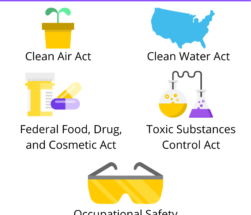With the increasing trend of remote work, having the right setup and collaboration tools is crucial for maximizing productivity and fostering effective teamwork. In this article, we will explore some essential tools that can enhance your remote work experience and help you stay connected with your colleagues.
1. Reliable Internet Connection
One of the fundamental requirements for any remote work setup is a reliable internet connection. Whether you need to attend video conferencing calls, send large files, or access cloud-based tools, a stable and high-speed internet connection is essential. Invest in a reputable internet service provider that offers the necessary bandwidth to support your remote work demands.
2. Ergonomic Workspace
A comfortable and ergonomic workspace is crucial for maintaining productivity during remote work. Make sure to invest in a comfortable chair, an adjustable desk, and proper lighting to minimize strain on your body and reduce the risk of long-term health issues. Additionally, consider using an ergonomic keyboard and mouse to optimize your typing experience.
3. Video Conferencing Tools
Remote work often involves collaborating with team members or clients from different locations. Video conferencing tools, such as Zoom or Microsoft Teams, enable face-to-face communication and virtual meetings. These platforms provide features like screen sharing, chat functionality, and recording options, allowing team members to collaborate effectively regardless of their physical location.
4. Project Management Software
Staying organized and managing tasks efficiently are key to successful remote teamwork. Project management software, like Asana or Trello, allow teams to create and assign tasks, set deadlines, monitor progress, and communicate within a centralized platform. These tools streamline remote collaboration, enhance productivity, and ensure that everyone is on the same page regarding project goals and timelines.
5. Cloud Storage and File Sharing
When working remotely, it’s essential to have a secure and convenient way to store and share files. Cloud storage platforms such as Google Drive or Dropbox offer reliable solutions for remote teams to store, access, and collaborate on documents in real-time. These platforms also provide version control and backup options, ensuring that your files are protected and easily accessible from any device.
6. Communication and Messaging Apps
Effective communication is critical for remote teams. While email is still commonly used, instant messaging apps like Slack or Microsoft Teams offer real-time and efficient communication channels. These apps allow team members to send messages, share files, create channels for different projects or teams, and even integrate with other collaboration tools. Instant messaging apps streamline communication and foster quick decision-making within remote teams.
7. Virtual Private Network (VPN)
Working remotely often involves accessing sensitive company resources and data, which requires a secure internet connection. A virtual private network (VPN) encrypts your internet connection, ensuring the confidentiality of your data. It allows you to connect to your company’s network securely, regardless of your physical location, protecting your privacy and mitigating the risk of cyber threats.
8. Time Tracking and Productivity Tools
When working remotely, it can be challenging to maintain focus and manage time effectively. Time tracking and productivity tools like Toggl or RescueTime can help you monitor your work hours, set timers for specific tasks, and analyze your productivity patterns. These tools allow you to gain insights into your work habits and make adjustments to optimize your efficiency.
Conclusion
Having the right remote work setup and collaboration tools is crucial for maximizing productivity and ensuring an efficient workflow. From reliable internet connection and ergonomic workspace to video conferencing tools and project management software, each tool plays a vital role in facilitating remote work and fostering effective teamwork. By harnessing the power of these tools, remote workers can stay connected, collaborate seamlessly, and achieve great results regardless of their physical location.









